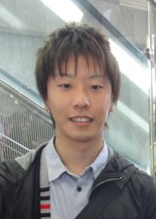Unconventional superconductors with spin-orbit interaction
Tatsuki Hashimoto is a PhD Student in the research group Interfaces and Correlated Electrons. His supervisor is Professor Alexander Brinkman from the Faculty of Science and Technology.
 This thesis studies superconductivity and its transport properties in the presence of spin-orbit interaction. Topological materials are now considered as a promising platform to realize unconventional superconductivity since spin-orbit interaction in some topological materials can support spin-triplet pairing state. In this thesis, we have found that exotic spin-orbit interaction in topological Dirac semimetals enhances the nodal spin-triplet state that hosts an exotic Andreev bound state. We have also studied the Josephson effect in Zeeman-split superconductor/ Rashba wire/ Zeeman split superconductor trilayer junctions. Our calculations have shown that it is possible to manipulate Andreev levels in the Josephson junctions by tuning the strength of the spin-orbit interaction.
This thesis studies superconductivity and its transport properties in the presence of spin-orbit interaction. Topological materials are now considered as a promising platform to realize unconventional superconductivity since spin-orbit interaction in some topological materials can support spin-triplet pairing state. In this thesis, we have found that exotic spin-orbit interaction in topological Dirac semimetals enhances the nodal spin-triplet state that hosts an exotic Andreev bound state. We have also studied the Josephson effect in Zeeman-split superconductor/ Rashba wire/ Zeeman split superconductor trilayer junctions. Our calculations have shown that it is possible to manipulate Andreev levels in the Josephson junctions by tuning the strength of the spin-orbit interaction.
Chapter 1 introduces basic properties and historical progress of superconductivity and topological materials. In particular, we have shown why the unconventional superconductivity can be realized in topological materials using a Weyl semimetal as an example. We have also made a list of topological materials that have exhibited the superconductivity. We hope that the list provides a hint to find other superconducting topological materials.
In Chapter 2 we have theoretically studied intrinsic superconductivity in doped Dirac semimetals. Dirac semimetals host bulk Dirac points which are formed by doubly degenerate bands, so the Hamiltonian is described by 4 * 4 matrix and six types of k-independent pair potential are allowed by the Fermi-Dirac statistics. We have shown that the unique spin-orbit coupling leads to characteristic superconducting gap structures and d-vectors on the Fermi surface and the electron-electron interaction between intra and inter orbitals gives the novel phase diagram of superconductivity. We have found that when the inter-orbital attraction is dominant, the unconventional superconducting state with point nodes appears
Chapter 3 studies bulk and surface physical properties of intrinsic superconductivity in doped Dirac semimetals to verify the experimental signature of possible superconducting states. Here, we have calculated the temperature dependence of bulk physical properties such as electronic specific heat and spin susceptibility and surface state. In the unconventional superconducting phase, either dispersive or flat Andreev bound states appear between point nodes, which lead to double peaks or single peak in the surface density of state, respectively. As a result, it has been found that possible superconducting states can be distinguished by combining bulk and surface





